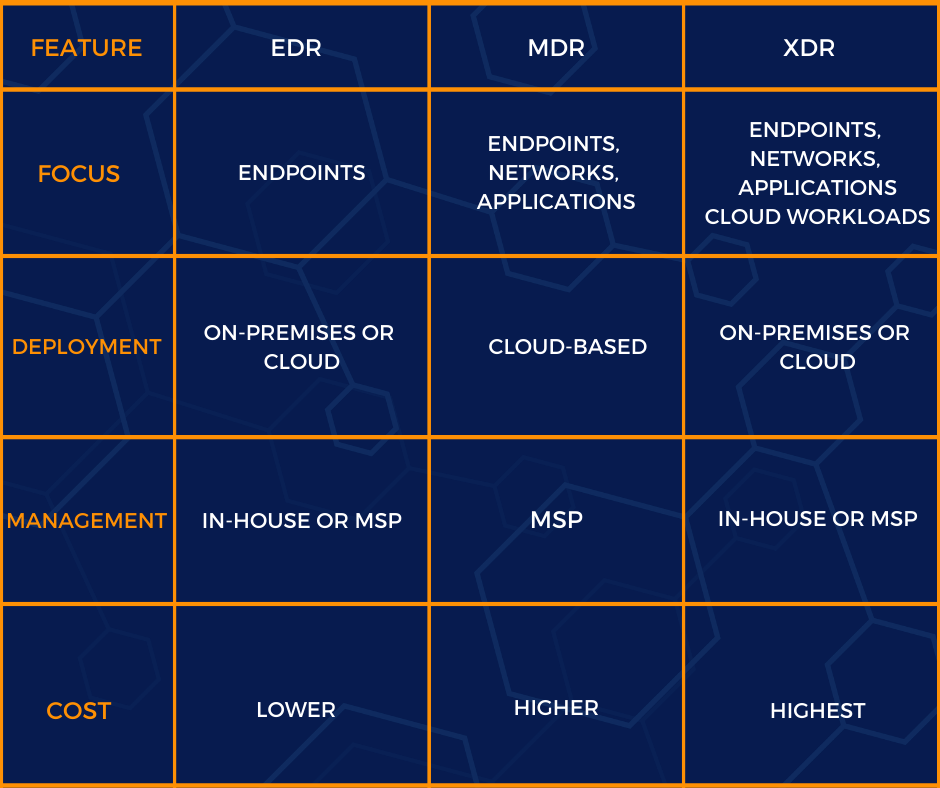EDR (Endpoint Detection and Response), MDR (Managed Detection and Response), and XDR (Extended Detection and Response) are all security solutions that can help organizations to detect and respond to cyber threats. However, there are some key differences between these technologies, and the best choice for your client will depend on their specific needs and budget.
EDR
EDR is a security solution that
focuses on protecting endpoints, such as laptops, desktops, and servers. EDR
solutions collect data from endpoints, such as system logs, network traffic,
and file activity, and use this data to detect and respond to threats. EDR
solutions can also be used to investigate security incidents and remediate
threats.
MDR
MDR is a security service that
provides managed detection and response capabilities. MDR providers use their
expertise and tools to monitor an organization's security environment for
threats and respond to incidents on the organization's behalf. MDR can be a
good option for clients that do not have the in-house expertise to manage their
own security operations.
XDR
XDR is a security solution that
extends EDR capabilities to protect a broader range of assets, including cloud
workloads, networks, and applications. XDR solutions collect data from a
variety of sources and use this data to detect and respond to threats across
the entire attack surface. XDR solutions can also be used to automate security
tasks and improve the efficiency of security operations.
Which do your clients need?
The best way to decide which security
solution is right for your client is to carefully consider their needs and
budget. If you are looking for a solution to protect their endpoints, then EDR
is a good option. If they are looking for a solution to provide managed
detection and response capabilities, then MDR is a good option. If they are
looking for a solution to protect a broader range of assets and automate
security tasks, then XDR is a good option.
Here is a table that summarizes the key differences between EDR, MDR, and XDR:

Which one should you choose for your client?
If they are a small business with
limited resources, then EDR may be the best option for them. EDR solutions can
be deployed on-premises or in the cloud and managed by your MSP.
If they are a larger organization with
more resources, then MDR or XDR may be a better option. MDR can provide them
with access to expertise and tools that they may not have in-house, and XDR can
help them to protect a broader range of assets and automate security tasks.
Ultimately, the best way to decide
which security solution is right for them is to consult with a security expert.
They can help assess the needs and choose the solution that is best for your client.
- Their security
expertise: If they have a strong in-house security team, then they may be able
to deploy and manage an EDR solution on their own. However, if they do not
have the in-house expertise, then they may want to consider MDR or XDR.
- Their budget: EDR solutions
are typically less expensive than MDR or XDR solutions.
- Their security
requirements: If they need to protect a broad range of assets and automate
security tasks, then XDR is the best option. However, if they are only
looking to protect their endpoints, then EDR may be sufficient.
Once you have considered all of these
factors, you can make an informed decision about which security solution is
right for your client.
